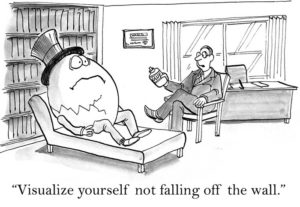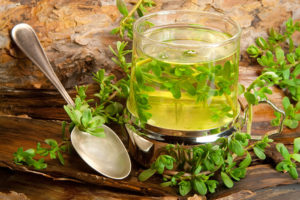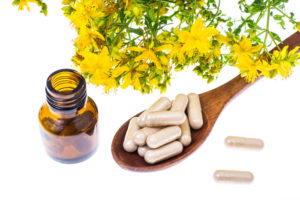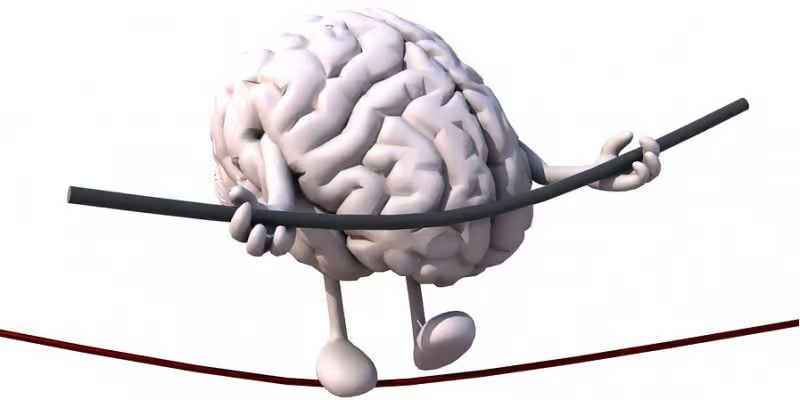Table of Contents
If you live in a hurricane-prone or typhoon-prone area, you’re familiar with the level of panic and frenzy leading up to the arrival of a major storm.
And you may have noticed the residual stress you feel during recovery, and fatigue after the storm leaves.
But the symptoms of post-traumatic stress disorder (PTSD) from monumental natural disasters like hurricanes, typhoons, fires, earthquakes and tornadoes are easy to overlook.
You may not realize that levels of hypersensitivity, feeling on edge, brain fog, depression and feelings of helplessness can be attributed to the disaster you just survived.
A study in 2005 by the CDC revealed that more than 50% of those surveyed after Hurricane Katrina showed signs of a possible need for mental health treatment.[i]
In New York, a study showed that in areas flooded by Sandy, over 11% of people surveyed showed symptoms of post-traumatic stress disorder (PTSD).[ii]
Another comprehensive report revealed that more than 2/3’s of us are likely to be exposed to trauma in our lifetime. And up to 1/5 of Americans could experience a traumatic event in any given year.[iii]
 So recent history shows that you can experience the symptoms of post-traumatic stress disorder (PTSD) from a hurricane and other natural disasters. Just like soldiers returning from combat.
So recent history shows that you can experience the symptoms of post-traumatic stress disorder (PTSD) from a hurricane and other natural disasters. Just like soldiers returning from combat.
Unfortunately, the best mainstream medicine can offer hurricane survivors, and those who’ve gone through other natural disasters like floods, fires and earthquakes, is psychotherapy (talk therapy), antidepressants, benzodiazepines, or dopamine-blocking agents.
In this post we’ll investigate how to recognize the symptoms of post-traumatic stress disorder. Then into recent research on what PTSD does in your brain.
And then we’ll dive into some proven natural dietary and nootropic supplements that have been shown effective in helping people recover from PTSD.
Hurricanes and Other Natural Disasters
When Hurricane Irma first slammed into Barbuda in the Eastern Caribbean, she was a Category 5 hurricane with winds of 185 mph. After wiping out the islands of Barbuda, St. Maarten, the USVI and BVI, and the Turks & Caicos, the storm tore up the north coast of Cuba. Setting a record for coastal flooding from Baracoa in the east to west of Havana.[iv]
By the time Irma reached Naples, FL, the storm weakened to a Category 4 with peak winds of 142 mph. Once the storm petered-out somewhere over Alabama, 16 million people were left without power.
 A month prior to Hurricane Irma, Hurricane Harvey slammed into Texas as a Category 4. Dumping an estimated 27 trillion gallons of rain over the state. And the death toll continues to climb every day.[v]
A month prior to Hurricane Irma, Hurricane Harvey slammed into Texas as a Category 4. Dumping an estimated 27 trillion gallons of rain over the state. And the death toll continues to climb every day.[v]
But long after the floodwaters recede, and the devastation is cleaned up, those who lived through Harvey or Irma face a different kind of recovery. From the storm’s assault to their physical and mental health.
The stress that came from not knowing if your home was under water. Not knowing if your roof was going to fall on your head. Seeing someone killed or bodies floating by. The incredible sound of the storm that reminded you of the racket created by three freight trains going by.
In the immediate aftermath of a crisis like Hurricane Irma or Harvey, the priority is survival.
But after first responders and volunteers leave and the outpouring of support subsides, survivors are left with haunting memories. Stress that can take a toll on mental health.
And for many, the very real symptoms of post-traumatic stress disorder.
What is PTSD?
The full syndrome of post-traumatic stress disorder (PTSD) was first defined in the Diagnostic and Statistical Manual of Mental Disorders (DSM-III), third edition of the American Psychiatric Association in 1980.[vi]
The APA defined “a traumatic event was conceptualized as a catastrophic stressor that was outside the range of usual human experience”. They had in mind events such as war, torture, rape, the Holocaust, atomic bombings, natural and man-made disasters.
While most people exposed to traumatic events do not develop PTSD, others go on to develop full-blown syndrome.
The stressor ‘criterion’ specifies that a person has been exposed to a catastrophic event. Or repeated exposure to the horrific consequences of a traumatic event by people like police or body handlers.
Symptoms of PTSD
You can get and experience the symptoms of PTSD for decades or even a lifetime. Symptoms usually begin within 3 months of the traumatic incident. But sometimes can occur much later.
For symptoms to be considered PTSD, they must last more than a month. And be severe enough to interfere in functioning relationships or work.[vii]
Re-experiencing symptoms
- Flashbacks – reliving the event over and over
- Nightmares
- Frightening thoughts
Avoidance symptoms
- Avoiding places, events, or objects that are reminders of the experience
- Avoiding thoughts or feelings related to the traumatic event
- Feeling detached or unable to connect with loved ones
Arousal or reactivity symptoms
- Hypersensitivity, easily startled
- Hypervigilance, feeling tense or on edge
- Difficulty sleeping, insomnia
- Irritability or angry outbursts
Cognition and mood symptoms
- Brain fog, trouble concentrating, loss of memory
- Depression, hopelessness
- Trouble remembering key features of the traumatic event
- Feelings of guilt or blame
- Loss of interest in enjoyable activities
- Headaches
Children with PTSD
- Wetting the bed after learning to use the toilet
- Forgetting how or unable to talk
- Acting out the scary event during playtime
- Being unusually clingy with a parent or other adult
But there is increasing evidence that PTSD isn’t just psychological. Several researchers have found a strong link between PTSD and inflammation or other immune responses.
A study published in the Journal of Psychiatric Research found elevated levels of c-reactive protein in survivors of the World Trade Center attack.[viii]
The association between this biomarker and PTSD is so strong that some have proposed diagnosing PTSD with a CRP blood test.
Post-Traumatic Stress Disorder and Your Brain
PTSD is a stress disorder. Neuroscientists at the University of California, Berkeley, found that chronic stress triggers long-term changes in brain structure and function.[ix]
Chronic stress changes neural networks. Cortisol creates a domino effect that hard-wires pathways between the hippocampus and amygdala. (The amygdala (lizard brain) is the area responsible for your fight-or-flight response).
This hard-wiring caused by stress is not the way your brain was designed. But chronic, ongoing stress tricks your brain into rebuilding circuits and hunkering down for the long haul.
This re-wiring appears to be permanent. Unless you intervene with something like anyone of the nootropic supplements we’ll investigate in a minute.
Chronic stress seems to ‘flip a switch’ in stem cells in the brain. And turns them into a type of cell that prevents connections to the prefrontal cortex. Preventing improved learning and memory.
And laying down the scaffolding linked to anxiety, depression and PTSD.
Chronic stress coats axons extending from neurons in excess myelin, reduces the number of neurons, and gray matter decreases while white matter increases.
Under conditions of chronic stress and excess cortisol, your brain’s axons are coated (or sheathed) in more myelin than normal. Under healthy conditions this “sheathing” is a protective measure.
But this excessive sheathing is likely an evolutionary measure made to reinforce the connection between the hippocampus and amygdala. Improving the fight-or-flight response during extended periods of threat or attack.
The chronic stress caused by hurricanes and other natural disasters which result in PTSD hijacks your fight-or-flight response system.
It backfires in daily life after a traumatic event like a hurricane, in which you are no longer in physical danger.
Get Your Life Back with These Nootropic Supplements
If you recognize any of the symptoms of PTSD months after a hurricane or other disaster – there is hope. You can recover from post-traumatic stress disorder.
 Your doctor will likely prescribe antidepressants, benzodiazepines, or dopamine-blocking agents. And may refer you to a psychiatrist for talk therapy. Or worse yet, something like ‘Prolonged Exposure’ therapy. Where you’re told to keep on reliving the event until you’re desensitized to it.
Your doctor will likely prescribe antidepressants, benzodiazepines, or dopamine-blocking agents. And may refer you to a psychiatrist for talk therapy. Or worse yet, something like ‘Prolonged Exposure’ therapy. Where you’re told to keep on reliving the event until you’re desensitized to it.
That sounds to me like cruel and unusual punishment. But if you’re brave, you may want to try it.
Instead, I recommend trying some natural dietary or nootropic supplements.
The following nootropics have been found in clinical settings, and in real life, to help alleviate the symptoms of PTSD.
Each nootropic below has a live link that will take you to the full review for that dietary supplement. Including recommended dosage and side effects.
This ancient Ayurvedic herb, Ashwagandha has been used for thousands of years for its remarkable stress-relieving properties. It helps reduce anxiety and depression because it reduces the stress hormone cortisol, lowers blood sugar levels and improves lipid profiles.[x]
Ashwagandha helps regenerate axons and dendrites of neurons in your brain. It helps reconstruct synapses.[xi] The junctions where neurons communicate with other neurons. Boosting memory and restoring neural networks affected by severe stress like PTSD.
But Ashwagandha does so much more to relieve stress, anxiety and depression. Go to the link above and read the full review for all the remarkable benefits this herb offers.
Just one example is a study done comparing Ashwagandha with the popular benzodiazepine lorazepam (Ativan®). And the tricyclic antidepressant imipramine (Tofranil®).
The researchers concluded that as a mood stabilizer, Ashwagandha worked on depression and anxiety as well as either of the two antidepressants.[xii]
 Bacopa Monnieri is a perennial aquatic herb originally from the wetlands of southeast Asia. Otherwise known as ‘water hyssop’, it’s often referred to as “Brahmi”. Named after the supreme god Brahma.
Bacopa Monnieri is a perennial aquatic herb originally from the wetlands of southeast Asia. Otherwise known as ‘water hyssop’, it’s often referred to as “Brahmi”. Named after the supreme god Brahma.
Bacopa’s two active components are bacosides A and B. They improve the signaling of electrical impulses between neurons in your brain. Bacosides also help rebuild damaged neurons. The same neurons damaged by chronic stress caused by PTSD.[xiii]
Bacopa also reduces stress and anxiety. Research at Banaras Hindu University in India showed Bacopa as effective for anxiety as the benzodiazepine drug lorazepam.
One of the side effects of lorazepam is memory loss. Bacopa Monnieri on the other hand, reduces anxiety while boosting cognition.[xiv]
NADH is the active coenzyme form of Vitamin B3 (niacin) that is found in and critical for the health of every cell in your body and brain.
NADH is the primary carrier of electrons from glucose and lactate for ATP synthesis. ATP is the fuel source for mitochondria. The power supply in each of your brain cells. So you need NADH to transfer the energy from the food you eat into a type of energy your body can use.
Research has shown that supplementing with NADH regenerates stem cells in your brain[xv], decreases anxiety[xvi], and reduces the symptoms of chronic fatigue.[xvii]
Some clinics in the USA and other countries are using NADH therapy as a treatment for addiction, anxiety, depression, chronic stress and post-traumatic stress disorder (PTSD).
Lithium is a soft, silvery-white alkali metal and trace element considered essential for human health. The therapeutic use of lithium goes back to ancient Greek and Roman times. People enjoyed soaking in alkali springs to help with physical and mental illness.
Today lithium has the undeserved reputation as only a ‘drug’ used to treat bipolar disorder and mania. But the clinical research on the neuroprotective benefits of lithium are so overwhelming, some scientists are beginning to ask “why isn’t everyone using lithium”?
Here we’re talking about micro-dosing lithium in the form of Lithium Orotate for treating the symptoms of PTSD.
Lithium has been shown to prevent apoptosis, reduce glutamate toxicity mediated by NMDA-receptors, promotes BDNF needed for synaptic plasticity for learning and memory, and stimulates neuronal stem cells.
Supplementing with Lithium Orotate has been shown to stabilize mood, and prevent depression and even suicide. Lithium Orotate will help put a stop to outbursts of rage, and reduce anxiety.
For those dealing with PTSD in the aftermath of a hurricane, using Lithium Orotate could mean feeling excited about life for the first time in a long time. Anxiety and social anxiety are no longer a problem. Life is simply more fun and enjoyable.
If you’re dealing with insomnia, racing thoughts, or lack of motivation, I highly recommend trying Lithium Orotate and see how it works for you. Motivation could increase. And you’ll have more coping ability.
 L-Theanine is a non-dietary amino acid found in green tea (camellia sinensis). It is similar to the neurotransmitters l-glutamate and l-glutamine.
L-Theanine is a non-dietary amino acid found in green tea (camellia sinensis). It is similar to the neurotransmitters l-glutamate and l-glutamine.
L-Theanine boosts alpha brain waves (8-12Hz) promoting alert relaxation[xviii]. And theta brain waves associated with creativity and relief from trauma.
L-Theanine increases GABA, serotonin and dopamine levels in your brain.[xix] As well as increasing Brain-Derived Neurotrophic Factor (BDNF) and Nerve Growth Factor (NGF). Producing an energizing and calming effect. And improving cognition and memory.
And L-Theanine is an antagonist of NMDA receptors which can inhibit synaptic release of glutamate. Protecting your brain from over-stimulation caused by glutamate, and possible glutamate toxicity.
You can get L-Theanine in capsule or tablet form using 200 – 400 mg once or twice per day.
My preferred way of getting L-Theanine is drinking 3 or 4 cups of green tea throughout my day. But extracting the optimal amount of L-Theanine from green tea is both an art and science.
Please see the full review for more on this remarkable nootropic including how to steep the perfect cup of green tea.
Phenibut is an analogue of the inhibitory neurotransmitter GABA. It was developed in St. Petersburg, Russia in 1963. And has since been used as a pharmaceutical used to treat PTSD, anxiety, depression, insomnia, alcoholism and other neurological disorders.
The addition of a phenyl ring allows Phenibut to cross the blood-brain barrier much more readily than supplementing with GABA. This nootropic boosts the calming neurotransmitter GABA. And has been shown to decrease Beta brain waves and increase Alpha brain waves.[xx]
Some neurohackers say Phenibut is the best anti-anxiety ‘medication’ they’ve ever used. Including some well know pharmaceuticals (i.e. Clonazepam®, Diazepam®, Alprazolam®) used to treat anxiety. With none of the nasty side effects that come with prescription meds.
I’ve even seen reports by combat veterans who say that Phenibut worked far better than any prescription anti-anxiety med. Truly worth considering for treating the symptoms of PTSD once the hurricane is over.
The ancient remedy Rhodiola Rosea has remarkable stress-relieving and anti-anxiety properties. And stands shoulder to shoulder with some of the most potent drugs used to treat depression and anxiety.
Rhodiola Rosea helps in neurogenesis by repairing and growing new neurons. It also activates the synthesis and re-synthesis of ATP, your body and brain cell’s main energy source.
Rhodiola Rosea helps reduce the inflammatory C-reactive protein which some professionals are considering using as a diagnostic tool for PTSD. And salidroside, one of many components of this incredible herb, protects neurons from oxidative stress-induced cell death.
Reports from the nootropics community, and data from clinical trials show that Rhodiola Rosea encourages a balanced mood.[xxi]
And Rhodiola improves mental performance under stress. Studies have shown it increases the number of neurons in the hippocampus to normal levels. The same neurons lost as a result of PTSD.[xxii]
One study published in Phytomedicine evaluated the efficacy of using Rhodiola Rosea compared to the antidepressant sertraline ((Zoloft®).
The research team concluded that even though Rhodiola offered slightly less antidepressant benefits, it possessed “a more favorable risk to benefit ratio for those with mild to moderate depression”.[xxiii]
SAM-e is the naturally-occurring amino acid methionine bound to an ATP molecule. And is found in nearly every cell in your body. It helps produce and breakdown the neurotransmitters acetylcholine, dopamine, serotonin, norepinephrine and melatonin in your brain.
Studies show that SAM-e is very effective in treating depression without the side effects of prescription antidepressants. And while pharmaceutical antidepressants can take from 6 to 8 weeks to begin working, SAM-e can work much faster.
Scientists at the US Department of Health and Human Services conducted an analysis of 102 individual studies in 25 databases on SAM-e and depression in 2002.
In their report, the researchers concluded “Treatment with SAM-e was equivalent to standard therapy for depression”.[xxiv]
For optimal effects with SAM-e, stable, enteric-coated tablets are recommended. And taken on an empty stomach, either one hour before or two hours after meals.
One big word of caution: SAM-e needs Vitamins B6 & B12 and folate to work. Or SAM-e will elevate your homocysteine levels. High homocysteine can cause heart attacks.
St. John’s wort is a potent antidepressant. It has been used to treat a variety of internal and external illnesses dating back to the ancient Greeks.
St. John’s wort inhibits the uptake of serotonin, dopamine, GABA, glutamate and norepinephrine. Inhibiting the neuronal uptake of these neurotransmitters can have a profound effect on depression and mood.
 St. John’s wort extract decreases oxidative stress, prevents neurotoxicity, and brain inflammation. It helps maintain mitochondria electric potential in brain cells.
St. John’s wort extract decreases oxidative stress, prevents neurotoxicity, and brain inflammation. It helps maintain mitochondria electric potential in brain cells.
And St. John’s wort moderates the genes controlling the function of your HPA-axis which is directly related to symptoms of anxiety and stress.
In 1977, the British Medical Journal published a meta-analysis of 23 previously published studies on St. John’s wort drawn from foreign medical journals.
The analysis showed that overall, St. John’s wort was significantly superior to placebo. And was as effective as pharmaceutical antidepressants.[xxv]
The same journal published another study in 2005 showing that St. John’s wort was equally effective in treating depression and better tolerated than the widely prescribed antidepressant paroxetine (Paxil®).[xxvi]
St. John’s wort has been extensively studied for treating a wide range of health disorders including PTSD. To see more of these studies, click the live link above to go to the full review of this amazing nootropic supplement.
But dosage of St. John’s wort and choice of supplement can be complicated. So please refer to the full review.
And you should NOT use St. John’s wort if you are taking any kind of antidepressant medication. For a full list of precautions, see the full review.
Post-Traumatic Stress Disorder is Curable
You took refuge in the shower as the roof was peeled off from over your head. Now you feel homeless in 90-degree heat with no A/C. No water or food for days. And you can’t call anyone because the cell towers are down.
Months after the trauma and when things have finally settled… the symptoms of rage and feelings of hopelessness set in. You can’t talk to family or friends. And nights are filled with nightmares and no sleep.
It doesn’t have to be this way.
PTSD is not a tough nut to crack no matter what the mental health professionals say. Instead of re-living the horror of the trauma you were dealt with using ‘Prolonged Exposure’ therapy. Or dealing with the side effects or outright failure of antidepressants.
Try natural nootropic supplements instead. And put your life back together. You can recover.
The thing is you may not get any help from your doctor. They haven’t the knowledge or experience in anything other than ‘traditional treatment’. You will likely have to do some experimenting on your own.
You can start with a combination of:
- Ashwagandha or Bacopa Monnieri
- Lithium Orotate
- NADH
- SAM-e (with a high quality B-Complex)
- Rhodiola Rosea
Learn to steep and drink 3 or 4 cups of green tea during your day. And see how you feel in the next few days.
If one nootropic doesn’t seem to be providing any benefit then try another from the list in this post. Follow the dosage recommendations for each provided in the full review for each nootropic.
Keep at it until you do feel relief from the PTSD symptoms you’ve been dealing with. And get your life back with these safe, natural treatments for PTSD.









Join The Discussion - 36 comments
Daniel
February 26, 2023
Hi david,
Is theanine and NADH enough to help me heal from my long term extreme stress?
I have tried bacopa, ashwagandha and rhodiola but i do not like the effects im getting so i cant take them
David Tomen
February 26, 2023
Daniel, L-Theanine and NADH should help. But for “long term extreme stress” it will likely take more. There is no “one pill” solution to reversing the effects of that kind of stress.
Is there anything else on the list above that you could use? Lithium Orotate and SAM-e with a BioActive B-Complex should also help. Or even skip the SAM-e if it does not agree with you and just use the BioActive B-Complex.
Daniel
February 27, 2023
Thanks alot for the answer, i was thinking to add lithium aswell so theanine+NADH+lithium.
Should i add the B-complex ? Or can i skip that one?
David Tomen
March 6, 2023
Daniel, I would definitely add the B-Complex.
Daniel
February 28, 2023
David i forgot to mention that im also taking
Tryptophan with b3 and b6,
Tyrosine, taurin, magnesium.
I didnt mentioned it because i was not sure if these helps to reverse the long term extreme stress.
They do work amazing for my depression though.
Now my plans is to add theanine, NADH, lithium, lions mane, DHA and performance lab energy.
Would u say this stack is valid for the goals im trying to achieve? (Reverse the effects of the long term extreme stress)
David Tomen
March 6, 2023
Daniel, as you can see from the article above it takes a while to recover from chronic stress. But you can as long as you provide the tools your brain needs to get healthy again. Everything you mentioned in your comment here contributes to a healthier, better functioning brain.
Niall
February 12, 2023
Just so people know, phenibut comes with just as many downsides as most prescription anti-anxiety medications. Phenibut works wonderfully for anxiety and lifts mood as well. I find that it doesn’t completely numb my anxiety like benzos, but it reduces it a lot and also makes me far more outgoing and talkative which results in me having less social anxiety. So in that way it’s actually better for social anxiety than benzos. Benzos may completely eliminate social anxiety, but at the expense of becoming emotionless and dull minded. The most similar feeling drugs to phenibut are gabapentin and pregabalin. Phenibut can cause physical dependency in less than a week of daily use. It’s best not to take it more than 3 days in a row and at doses below 2g per day. Tolerance also builds up fast. So I would recommend saving it for the days you need it the most. The withdrawal from phenibut is extremely intense. Although it doesn’t cause seizures like benzo withdrawal it causes an agonizing withdrawal of its own. In some ways, it’s a more intense WD than from benzos, but it’s over much quicker than benzo wd. If you need daily relief I would personally recommend a prescription for pregabalin or gabapentin if you can’t get pregabalin.
Beca
September 7, 2022
Spot on, concise article; matches my own years of research. This site deserves widespread networking. Preteens and young adults might benefit the most; perhaps link to multiple sites including this demographic would benefit many kids and prevent drug toxicity and dysfunction later on.
Very thoughtful to include the hurricane mention; as a survivor of Andrew, Katrina/Wilma, Irma and a bunch of others, I have not seen this focus in any trauma articles before. The hidden trauma, worst of all, is the unseen mold that further destroys the neurological system with mycotoxins/ptsd starting 48 hours after wind driven water soaks the insides of walls in every direction. By that time it is too late for remediation; the third hurricane trauma the cost of remediation and the turndowns from insurance companies (financial ptsd).
David Tomen
September 7, 2022
Beca, I thought of the hurricane connection when trying to figure out the cause of my own diagnosis of PTSD. It was the only thing that really resonated with me and that was 15 years after 3 days of a Category 5 storm in Antigua where I was living.
Bernd
November 17, 2024
Would be great to learn what Nootropics help best for Mycotoxicity..
David Tomen
November 17, 2024
Bernd, not my area of expertise. But Dave Asprey is an expert on myotoxicity so check out his stuff.
William Wang
March 26, 2022
Hi, David:
“There’s a lot of heterogeneity across different people with PTSD; it’s not one size fits all. Every PTSD patient generally has a mix of different symptoms,” said Neylan, professor-in-residence in psychiatry at the UC San Francisco Weill Institute for Neurosciences. “Some people are very avoidant. Some people are very hyperreactive. The idea is that if you can show that these different symptom clusters have different neural circuitry, it might actually lead us closer to subtyping people in a way that we could be more targeted in our treatment.”
https://medicalxpress.com/news/2022-01-anxiety-ptsd-linked-myelin-brain.html
David Tomen
March 26, 2022
William, good find and thanks. I covered some of this in this article. But this further explains what is going on in the brain of someone dealing with PTSD.
And while we can use nootropics to help alleviate some of the symptoms it would be great if we could find a targeted way of reducing this excess myelin. Please let me know if you come across anything like that from your research.
Rob
July 29, 2021
Thanks for the reply 1.What are the differences between alpha gpc 99% , 50% and Cdp choline? I assume 50% is less potetent and cdp is more dopamine heavy?
2.What % extract is 1:1 lionsmane vs 8:1
I also saw a 30% extract is that 1:3 or 3:1 ?? How do I interpret it
3.To ween off xanax is it best to use L-theanine or phenibut? Your video says gaba supp wont penetrate brain blood barrier.
4.With below mentioned supplements when can i expect to see results and how often should i take a break as not to build up tolerance.
1.Lionsmane
2.L-theanine
3.Alpha gpc
4.Bacopa
5.Phenibut
Many thanks
David Tomen
July 30, 2021
Rob, Alpha GPC 99% has a tendency to liquify in the capsule which is the reason why it’s cut with a filler and sold as 50%. At 50% Alpha GPC stays in powder form.
Lion’s Mane extract 1:1 for example is one pound of raw Lion’s Mane extracted to one pound of extract. Or 8 pounds of raw Lion’s Mane to one pound of extract.
Turns out GABA can cross the blood-brain barrier just not that efficiently. Most GABA is produced in your gut and then sent to your brain likely via the vagus nerve.
L-Theanine is safer and dosage is far more forgivable than Phenibut. See my Phenibut review and you’ll see what I mean. That review also includes side effects and offers dosage recommendation.
Phenibut + Xanax is a deadly combination and I do not suggest you try in under any circumstance.
See my individual reviews for the others on your list for dosage, timing, and if there is a tolerance issue.
Rob
July 27, 2021
If I stack Alpha gpc, Bacopa, L- theanine, lionsmane, B complex, Vitamin C+ zinc , Vit d3, omega 3
Cbd oil. Which ones do i take together? Day or night? Amounts? And for how long to avoid tolerance and give the body a break.
David Tomen
July 28, 2021
Alpha GPC 300 mg 3-times per day
Bacopa Monnieri (20% bacosides) 450 mg per day in the morning
L-Theanine 100 mg 3-times per day
Lion’s Mane 1,00 mg twice per day
B-Complex in the morning or morning and noon
Vitamin C + zinc in the morning
Vitamin D3 5,000 IU per day in the morning
Omega-3 (DHA 1,000 mg per day in the morning)
CBD Oil as needed
3-times per day means morning, noon and late afternoon.
Kim Kelly
February 9, 2021
Hi David. After doing research in Nootropicts expert and trying different stacks I believe I’ve figured out where I really need to start which is here as well as healing a leaking brain. PTSD from childhood and adult. I just started GABA. I tried 450 and it made me too relaxed. Switched to 150mg and it is wonderful! Calmed my mind and anxiety 🙂 Could GABA be used in place of Lithium Orotate? I looked at both at the seem pretty similar. Thanks!
David Tomen
February 9, 2021
Kim they are two completely different supplements. Both are natural but cannot be used “in place of each other” because each has a job to do.
If that dose of GABA works for you that’s great! If you need to increase the dose take it before bed.